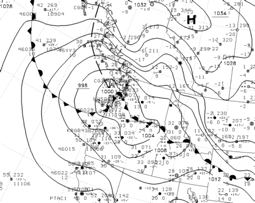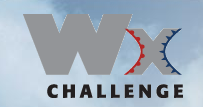ATMS 290 – WxChallenge
ATMS 290 is a 1 credit CR/NR class where everyone participates in the national forecast contest. Offered Fall and Winter quarters. We meet once a week to discuss the current forecast city, everyone makes forecasts 4 days a week and there are winners for each category, each city, overall winners and more. Contact me if you want to participate. Learn more about the contest here: http://www.wxchallenge.com/
Our team won the national contest in 2019!! See blog post: http://www.washington.edu/news/2019/04/04/april-weather-madness-uw-wins-top-team-individual-prizes-in-national-forecasting-contest-now-enters-tournament-round/
ATMS 370 – Atmospheric Structure and Analysis

Structure and evolution of extratropical cyclones, fronts and convective systems. Surface and upper air analysis techniques. Radar and satellite data. Real-world applications of basic dynamical principles. Introduction to operational products and forecasting.
Lab webpage at: https://atmos.washington.edu/~mcmurdie/classes/370/home.html
ATMS 442/504 – Atmospheric Motions II/Atmospheric Dynamics
Wave dynamics, numerical prediction, development of midlatitude synoptic systems, and general circulation. Includes laboratory exercises. Webpage via Canvas (sorry folks)
ATMS 502 – Introduction to Synoptic Meteorology (Graduate Level)
Overview of weather systems; atmospheric observations and data assimilation. Elementary manual and computer-aided synoptic analysis techniques. Interpretation of satellite and ground based observations. Kinematics. Fronts and frontogenesis; life cycles of extratropical cyclones; related mesoscale phenomena. Numerical weather prediction; interpretation of forecast products.
Latest Webpage: https://a.atmos.washington.edu/academics/classes/2022Q2/502/index.html
ATMS 591 – PNNL Instruments Course (Graduate Level)
An occasional course taught at the Pacific Northwest National Laboratory in Richland, WA in the fall for interested graduate students to learn from PNNL scientists all about measuring and analyzing data obtained from research-quality instrumentation. Students learn about radars, lidars, radiometers, cloud probes, and aerosol chemistry. Course will be offered in September 2022.

